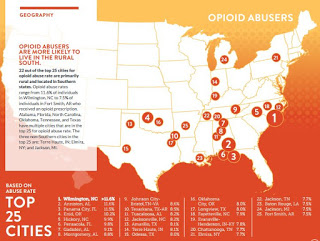Prescription drug addiction not only comes at a personal cost to individuals, but also at an enormous cost to employers

Kentucky Health News
With nearly one of three opioid prescriptions being abused, employers are not only subsidizing the cost of these drugs, they are also paying for the fallout that results from the abuse, according to a new study.
“The personal impact that opioid painkiller abuse takes on individuals, their friends, and family is absolutely tragic,” Kristin Torres Mowat, senior vice president of health plan and strategic data operations for Castlight Health, the health-information firm that led the study, said in a news release. “This crisis is also having a significant impact on the nation’s employers, both in the form of direct and indirect costs. From higher spending on healthcare, to lost productivity, to the dangers associated with employees abusing medications in the workplace: these are aspects of the crisis that are too often overlooked in the current discussion.”
The study, titled “The Opioid Crisis in America’s Workforce,” looked at anonymous claims data from nearly a million employer-based health insurance claims between 2011 and 2015, defining abuse as those who received more than a 90-day supply of opioid prescriptions and received prescriptions from four or more providers. It excluded claims that had cancer, palliative care or convalescence care diagnoses.
 |
| Graph from “The Opioid Crisis in America’s Workforce” report |
The study found that 22 of the top 25 cities that abuse opioids are in the rural South. Henderson was the only Kentucky town on this list, as part of the Evansville, Ind., metropolitan area, which had a 7.8 percent opioid abuse rate.
Kentucky ranks fourth in the nation for painkiller prescriptions, at about 130 prescriptions for every 100 people, Christine Vestal reports for Stateline.
So why aren’t more Kentucky towns on the list? “Anywhere with a ZIP code is included,” Castlight spokeswoman Cynthia Cowen said in an email. “However, in less populated
regions, showing the abuse rates may inadvertently lead to patient
identification.”
The Castlight study also found that on average, 4.5 percent of Americans who get narcotic painkiller prescriptions are abusers, and account for nearly one-third (32 percent) of total opioid prescriptions and 40 percent of opioid prescription spending.
And the cost to employers is huge, estimated at $10 billion annually for absenteeism and poor work productivity, says the report. In 2015, the study found that employers spent nearly twice as much ($19,450) in medical expenses on opioid abusers annually than on non-abusers ($10,853), a difference of $8,597.
The study offered some additional insights, including: baby boomers are nearly four times more likely to abuse opioids than Millennials; poorer people are twice as likely to abuse opioids as rich ones; states with medical marijuana laws have a lower opioid abuse rate than those that don’t; patients with a behavioral health diagnosis of any kind are three times more likely to abuse opioids than those without one; and opioid abusers have twice as many pain-related conditions as non-abusers.
The federal Centers for Disease Control and Prevention has called this issue a public-health crisis and has asked doctors to change the way they prescribe opioids, by only prescribing them for three to seven days at the lowest possible effective dose.
According to the CDC, nearly 2 million Americans are abusing prescription opioids, resulting in 16,000 deaths per year. In 2014, the latest data available, 1,087 Kentuckians died of overdoses, according to the Kentucky Office of Drug Control Policy.
The report suggests that employers have a role to play in addressing this through the use of data and analytics to determine prescribing trends that can then help them better understand what their employers needs are as they relate to opioid use and abuse, and then to guide them to appropriate benefit programs to prevent or treat their addictions.